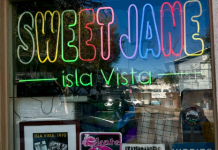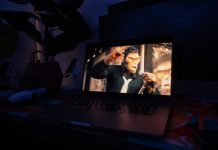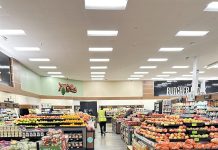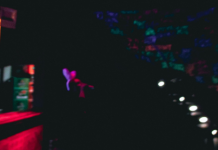Kendall Murphy
Staff Writer
About 60 architects gathered at Santa Barbara’s City Hall to design a re-imagined State Street during the weekend of Oct. 21. With many vacant retail spots and the massive Macy’s in Paseo Nuevo set to close by the end of the year, revitalization has become a hot-button issue.
The Santa Barbara City Council has even created the “Accelerate State Street” program that will make move-in faster and easier for retailers.
However, retail decline — in Santa Barbara and across the nation — indicates that State Street should move away from commercial focus.
Rather than attempt to cling onto mega-mall ambitions of the past, the City of Santa Barbara should embrace a fresh direction for its central street. The direction should move towards housing, public arts, and community building.
Affordable housing remains a problem in Santa Barbara, especially near the downtown area. With this in mind, building residences with reasonable rent should be a central priority.
The numerous empty storefronts along State Street provide an opportunity for the creation of more affordable housing prices.
However, making the investment and enduring the bureaucracy necessary to transform spaces into residences is too daunting of a task for some property owners, according to an article in Santa Barbara Independent.
This has led to the proliferation of vacancies throughout downtown.
Instead of streamlining the process for retailers to move onto State Street, the City of Santa Barbara should make it easier for living spaces to be built downtown. The Macy’s could be turned into affordable apartments or mixed-use space.
Some architects have imagined more residences above the retail strip on State Street, which would help the businesses below them.
These residential units should remain affordable to help people, who have been pushed out of central Santa Barbara due to high rent, move back to the center.
Another improvement that a State-Street redesign could facilitate is a greater connection between Santa Barbara’s colleges and universities with downtown.
University of California, Santa Barbara could have a student resource center close to State Street which could be a student gathering place for meetings, classes, or study sessions.
Perhaps this student center can better connect Gauchos to the arts and culture scene downtown. This center could also be intercollegiate, where students from UCSB, Santa Barbara City College, and Westmont can study together.
A greater influx of students downtown would also help boost retail sales and encourage students to spend money at places like restaurants and movie theaters.
If housing is built and suits a student budget, students may be encouraged to live downtown and make State Street a more vibrant community.
Finally, the re-imagination of State Street should include a greater presence of public art and the encouragement of art collectives such as SBCAST (The Santa Barbara Center for Art, Science and Technology).
Redesigning gives Santa Barbara the chance to re-imagine the art scene and encourage public art as never before.
Communal art spaces central to State Street would promote local artists and would be places for events, lectures, or music performances.
State Street developers lamented the rise of the “Funk Zone,” in Santa Barbara, which featured galleries, music venues, and wine bars, and drew crowds away from State Street.
State Street’s revitalization can potentially encourage the Funk Zone’s art scene to spill across downtown and breathe new life into the tired street.
The State Street redesign currently includes an underpass art revitalization project, which promises to be an interesting public art installation below the underpass that connects State Street to the waterfront area.
However, this alone is not enough because State Street itself is still somewhat devoid of public art. The city should provide grants to Santa Barbara artists to create pieces that contribute to the city’s art scene and draw more people downtown.
If Santa Barbara wants to reinvigorate State Street so it remains the city’s central artery, designers should move away from retail-focused development.
If the city creates affordable housing, student resources, and public art, State Street may once again be the sunny, stucco utopia like before.












